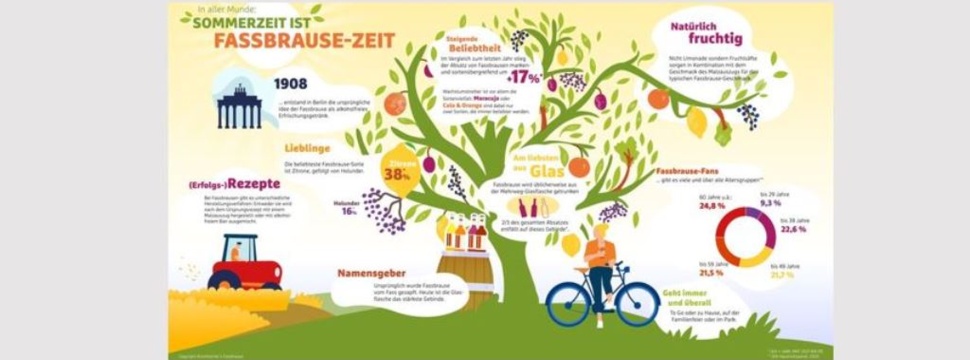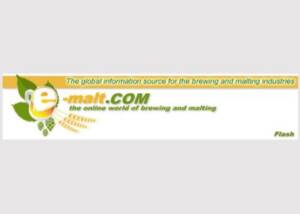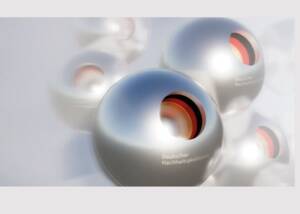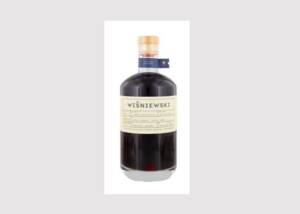Krombacher: On everyone's lips - summertime is Fassbrause time
News General news
Temperatures are rising, summer is coming - now non-alcoholic soft drinks are once again in demand. One category of beverage is becoming increasingly popular: the "Fassbrause" is on everyone's lips. But what is a Fassbrause? The term suggests: it has something to do with a barrel and it is a fizzy drink.

Keg soda from a keg?
The idea of the Fassbrause was born in Berlin in 1908. Ludwig Scholvien developed the non-alcoholic lemonade we know today as Fassbrause from water, malt and fruit concentrate. For a long time, the non-alcoholic drink was produced and served in or from barrels. And the "barrel" in the name has remained. Today, Fassbrause is usually drunk from returnable glass bottles: 2/3 of all sales of Fassbrause are in this container. The rest is evenly distributed between cans and EW products*.
Popularity on the rise
So it has been around for a long time - the Fassbrause. Initially known and enjoyed mainly in Berlin and Brandenburg, word of its good taste spread quickly: in 2010, the Fassbrause also appeared on the scene outside its inventor's home region and started its success story, which continues to this day. Because keg fizz is becoming more and more popular. Compared to last year, sales rose by 17%* across all brands and varieties. There is demand from all age groups: 9.3% of keg soda fans are younger than 30, 22.6% are in the age group between 30 and 39, 27.1% are between 40 and 49, 21.5% between 50 and 59 and 24.8% of users are 60 and older**. The consumption occasions are as varied as the target groups: whether in the park with friends, at a picnic, at a family party, as a refreshment "to go" or in (outdoor) gastronomy. Fassbrause always goes.
The (successful) recipe
There are different methods for producing keg fizz. Some suppliers rely on the original idea and produce on the basis of a malt extract, others use alcohol-free beer. The addition of fruit juice then creates the typical Fassbrause flavour. There are almost no limits to the variety of flavours: from lemon to mango to blackcurrant - the traditional drink is constantly being interpreted in a modern way with a view to new flavours. The most popular draught variety on the market is lemon (38%), followed by elderberry (16%)*. But more exotic varieties like passion fruit or cola & orange are also becoming increasingly popular.
Market leader: Krombacher's Fassbrause
There are more than 45 suppliers of Fassbrause on the German market: with a market share of 39%, Krombacher's Fassbrause is the clear market leader. There are many good reasons for this: At Krombacher, the production of Krombacher's Fassbrause is based on a malt extract. In addition, the high quality, the use of natural ingredients and the special production process make Krombacher's Fassbrause a special soft drink with 0.00% alcohol and the most popular Fassbrause brand in the German market. In addition, the diversity of varieties is a key success factor: in 2012, Krombacher Brauerei included the first variety of Krombacher's Fassbrause in its range - there are now seven different varieties in the portfolio. Their success proves them right: in 2020, a year marked by the Corona pandemic, Krombacher's Fassbrause increased its output to 178,000 hectolitres.










